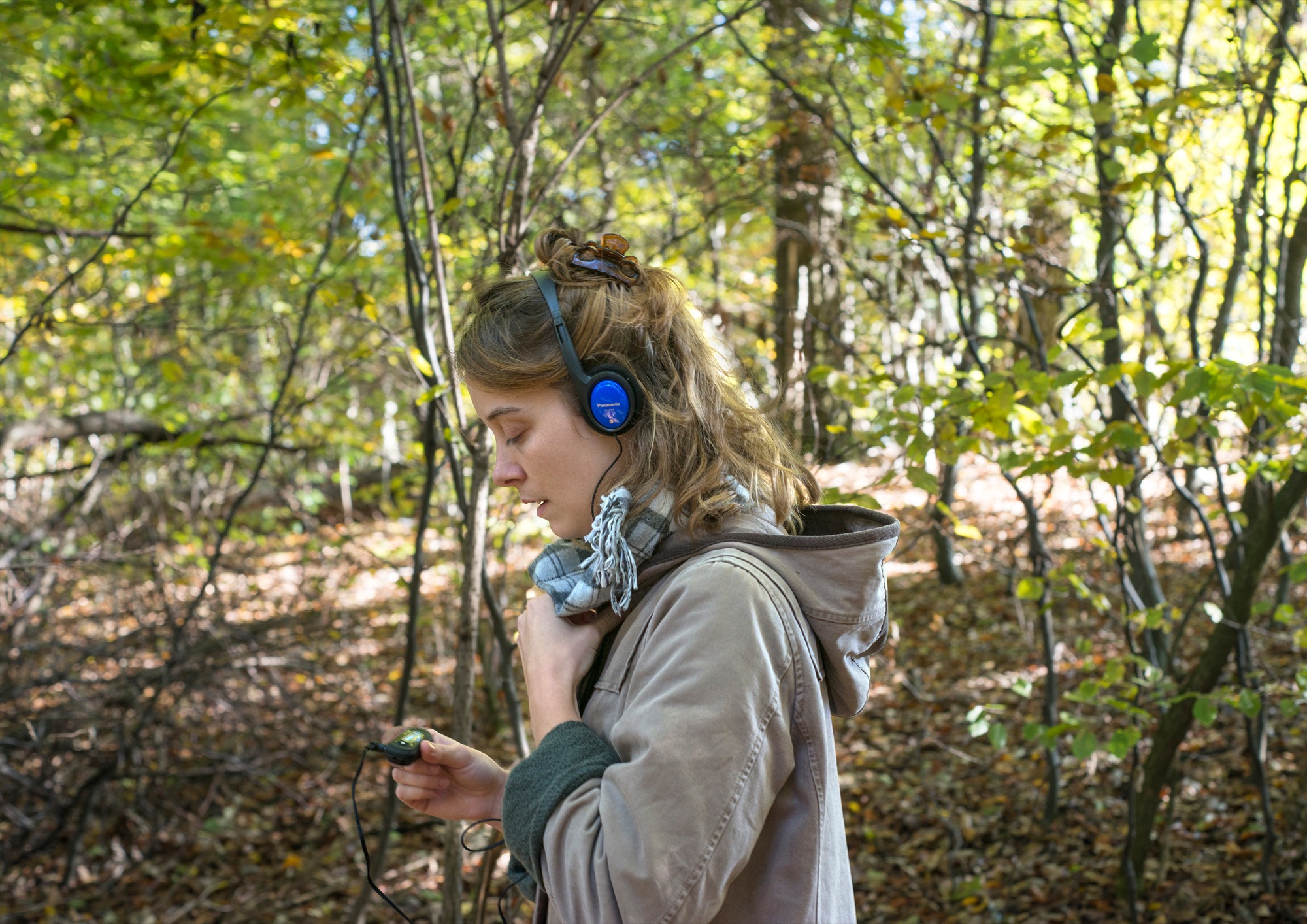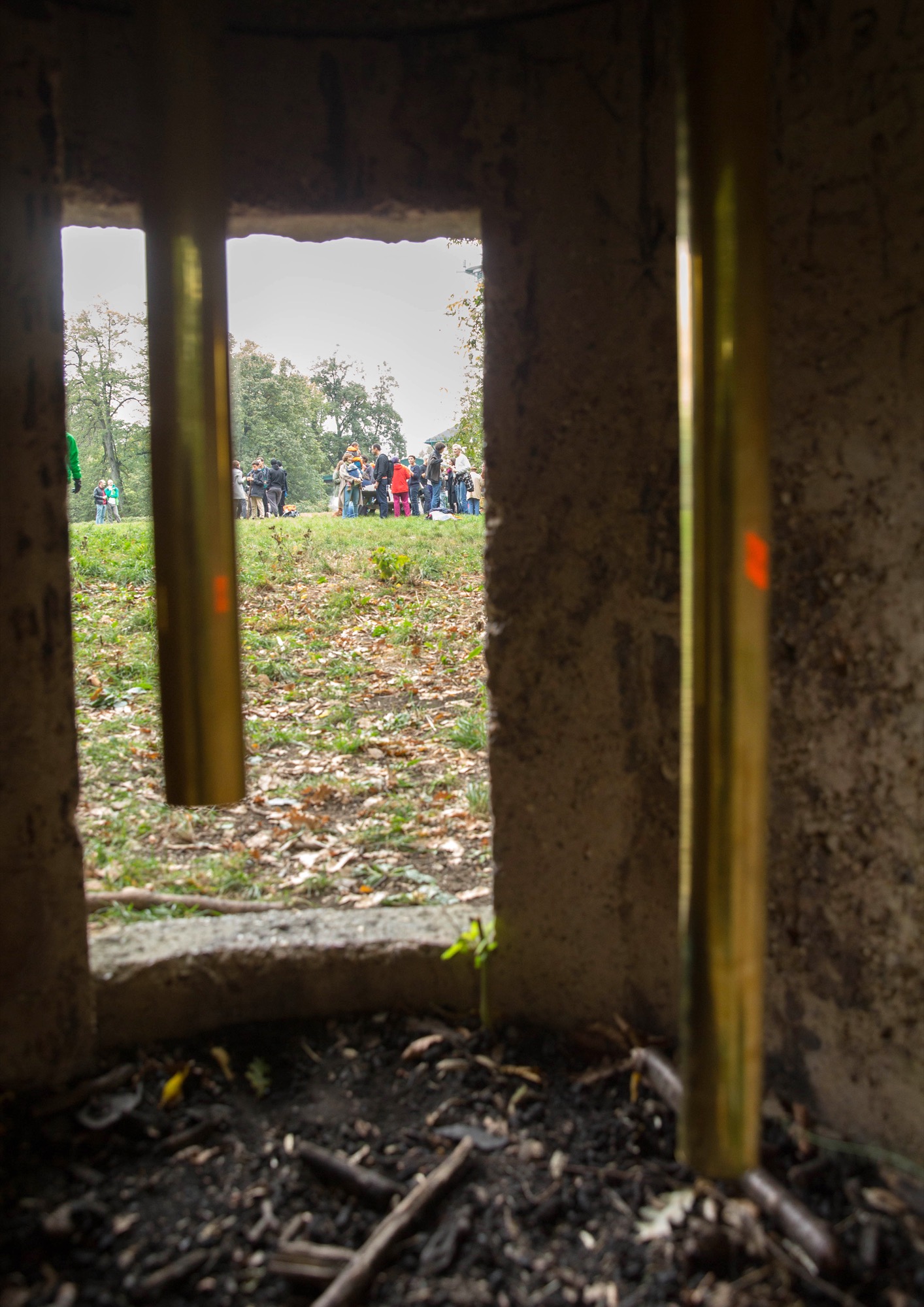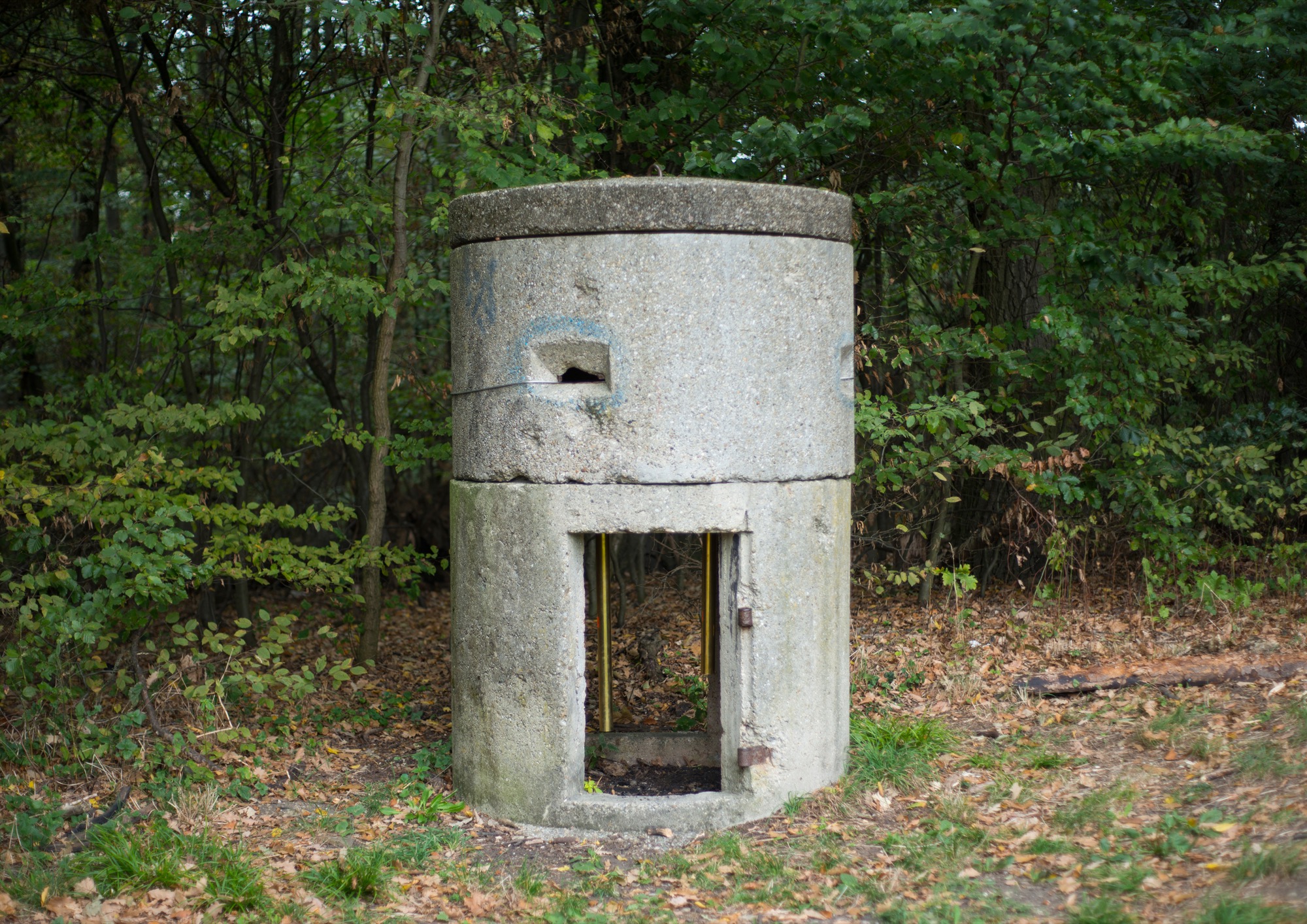2015 ︎ Position Report - Radio play and sculptural intervention
︎ MP3-Player, headphones ︎20 min︎ steel rope, clamps, tapes, brass (120 x 5 cm / 100 x 5 cm)







Positionsmeldung - Hörspiel und skulpturale Intervention
MP3-Player, headphones, 20:00 min.
steel rope, clamps, tapes, brass (120 x 5 cm / 100 x 5 cm)
The radio play »Position Report« guides the listener along a line through the Vienna Woods. It corresponds with the sequence of locations of the »Gaubefehlsstands Gallitzinberg« that is invisible at ground level and is commonly known as »Schirachbunker«. The bunker was planned to function as the »center of the air raid warning system of the Ostmark« in the underground of Gallitzinberg between 1942 and 1945.
In 1944 the so-called cuckoo was introduced in NS-broadcasting. This was not an air raid warning signal, but it alerted the listener to switch from radio broadcasting and to activate their wire broadcasting (vulgo: air raid transmitter). If one could hear »cuckoo, cuckoo« on the radio, people were calling to one another »The cuckoo screeched!«. This meant they had to reach home as soon as possible before the subsequent air raid alarm or to find shelter somewhere else.
The doorways of the bunker were blown up after the liberation of Vienna in 1945; their remains were covered with concrete by today's owners, the Forestry Commission Office of the City of Vienna in 1989. The sculptural intervention in the splinter protection bunker is an acoustic reference to the period after the liberation when the church bells were returned to their towers. This was after many of them had been melted down to produce weaponry for the war.
In 1944 the so-called cuckoo was introduced in NS-broadcasting. This was not an air raid warning signal, but it alerted the listener to switch from radio broadcasting and to activate their wire broadcasting (vulgo: air raid transmitter). If one could hear »cuckoo, cuckoo« on the radio, people were calling to one another »The cuckoo screeched!«. This meant they had to reach home as soon as possible before the subsequent air raid alarm or to find shelter somewhere else.
The doorways of the bunker were blown up after the liberation of Vienna in 1945; their remains were covered with concrete by today's owners, the Forestry Commission Office of the City of Vienna in 1989. The sculptural intervention in the splinter protection bunker is an acoustic reference to the period after the liberation when the church bells were returned to their towers. This was after many of them had been melted down to produce weaponry for the war.
—Sound Production
Florian Pfaffenberger
—Speaker of The Nazi
Michi Strasser
—Speaker of The women of the cuckoo
Barbara Kapusta
—Speaker of The news girl
Eva Engelbert
—Speakers of The girl's choir
Veronika Barnaš, Gabi Edlbauer, Elisabeth Greinecker, Marlene Hausegger, Martina Kigle, Eva Seiler, Johanna Tinzl
—Speaker of The American soldier
Nicholas Hoffman
—Speaker of The radio announcer
Florian Pfaffenberger
Florian Pfaffenberger
—Speaker of The Nazi
Michi Strasser
—Speaker of The women of the cuckoo
Barbara Kapusta
—Speaker of The news girl
Eva Engelbert
—Speakers of The girl's choir
Veronika Barnaš, Gabi Edlbauer, Elisabeth Greinecker, Marlene Hausegger, Martina Kigle, Eva Seiler, Johanna Tinzl
—Speaker of The American soldier
Nicholas Hoffman
—Speaker of The radio announcer
Florian Pfaffenberger
References and further reading:
—Original plans from the Vienna City and Province Archives (MA 8)
—Bezirksmuseum Ottakring ( Hrsg. ): Der Geheimnis umwobene Bunker am Gallitzinberg. Für den Inhalt verantwortlich: Robert Medek und Jochen Müller in Zusammenarbeit mit Marcello La Speranza. Booklet zur Sonderausstellung vom 5. November 2009 bis 27. Juni 2010, Wien 2009.
—Alexander Haide: Der Schirachbunker – Das Geheimnis im Wienerwald (Kindle Edition ).
—Marcello La Speranza: Wiener Luftschutzräume, Wiener Geschichtsblätter, 52. Jahrgang 1997.
Download of the Radio Play on www.mission-w.net︎︎︎
See Position Report - The Film︎︎︎
Fotoscredits:
© Studio DCW (1/2/5)
© Studio DCW (1/2/5)
© eSeL (4)
© Original plans from the Vienna City and Province Archives (MA 8) (6-9)